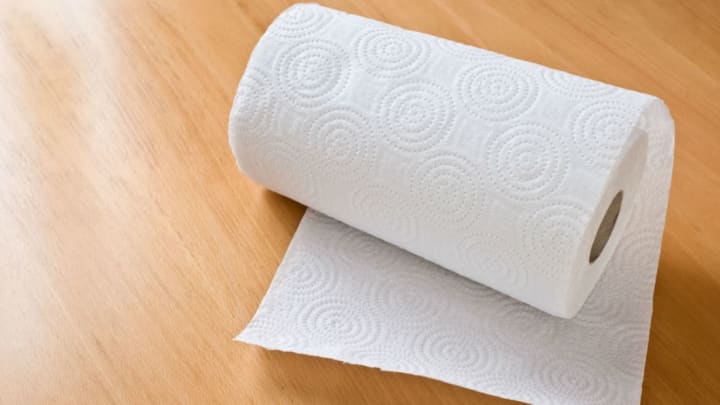At this point, the Brawny man can probably afford something nicer than a flannel shirt. Americans spend roughly $5.7 billion annually on paper towels, using them to clean up everything from spilled coffee to baby dribble to windows. Roll after roll is unspooled from a paper towel holder, makes a detour into a mess, then winds up directly in the garbage.
Are we really so lazy that we can’t wring out and reuse a sponge, a cloth wipe, or washable napkins? Or has Big Towel brainwashed us into believing that paper towels are simply the most convenient method of keeping things clean?
The question was recently explored by The Atlantic's Joe Pinsker, who noticed that Americans make up nearly half of the world’s paper towel use. (Second-place France spends just $635 million per year on discarded towels, little more than a tenth of what the U.S. shells out.) Pinsker wondered if it was due in part to population, but even on a per capita basis, we still spend more on towels than any other country in the world. Countries with comparable economies don’t buy as much as we do.
It turns out that the reasoning behind our alleged paper towel obsession may reside in how we problem-solve. In using a disposable towel, a mess can be immediately addressed and discarded, leaving no trace or obligation to clean our cleaning supplies.
There may also be pragmatic reasons: Using one-time-use towels reduces the chances of cross-contamination. (Imagine a sponge covering a bacteria-covered surface, then being set aside for reuse later.) And in a public bathroom setting, paper towels may actually be more hygienic than hand dryers, which can spread bacteria.
If you have a paper towel addiction, one tip Pinsker passed along is to consider reusing them. (Provided, of course, the mess wasn’t made up of raw meat or fish.) Sturdier paper towels can sometimes stand up to multiple applications before they start to break apart. You can also try using fewer towels by folding one in half and taking advantage of what’s known as interstitial suspension to trap water between the layers.
[h/t The Atlantic]
